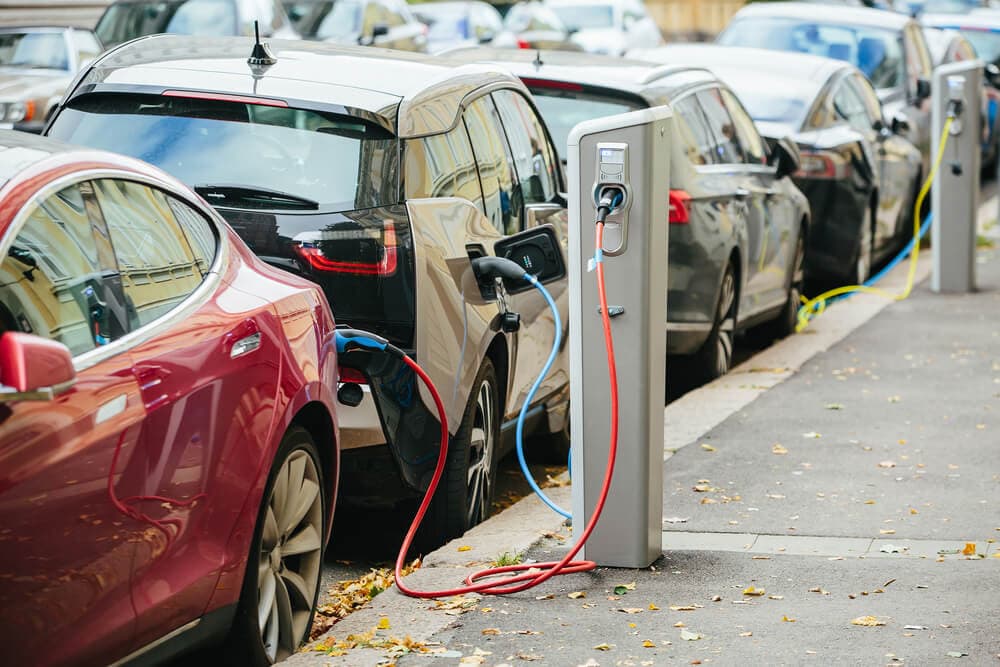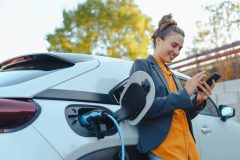Unveiling the Technology: How Do Electric Vehicles Work?
Electric vehicles are becoming increasingly common and they bring a host of pros — as well as some cons. If you’ve heard buying an EV may lower your car insurance, you’ve heard right — in some cases. Maybe you are holding off purchasing one until you understand them better.
In that case, keep reading to uncover all about electric vehicles and their insurance.
Brief History of Electric Cars
The history of electric cars stretches back nearly two centuries. As early as 1828, small-scale electric cars were created as alternatives to the familiar horse and carriage, and the first crude EV was built in 1832. As the craze slowly caught on, America introduced its first EV in 1889.
At the beginning of the 20th century, EVs accounted for one-third of all vehicles in the United States. This led to the creation of a hybrid car in 1901, but the popularity of the Model-T mostly destroyed public interest in EVs. Gas shortages in the ‘70s led to a brief renewal of interest, but people weren’t really interested in this tech until GM introduced the EV1 in 1996. Tesla entered the EV game in 2006 and has led this charge ever since, with other companies, such as Nissan, focusing on making their own EVs.
Types of Electric Vehicles
Before learning about electric cars and how they work, knowing the lingo is important. For example, “electric vehicle” is a catch-all term: There are three types of EVs.
Fully battery-powered EVs rely entirely on electrical power to function. Hybrid vehicles have both an electric motor and a traditional combustion engine. Finally, plug-in hybrid vehicles are powered by plug-in chargers, making them a hybrid of a fully electric vehicle and a traditional hybrid.
Under the Hood: Exploring the Components of EVs
How do EVs work? Learn more by going under the hood to understand the specialized anatomy of these innovative vehicles.
Anatomy of an Electric Car Engine
An EV engine has two primary components: a rotor and a stator. The stator consists of a core, a frame, and a conducting wire. The car battery supplies electrical power to the stator, causing the rotor to spin and providing the mechanical energy needed to operate the vehicle.
How Does an Electric Motor Work?
An EV’s motor generates a magnetic field in the car. The polarity of this field can be reversed, and the resulting rotation helps move the engine shaft and generate enough torque to complete important driving tasks, such as moving the wheels.
Importance of Cooling Systems in an EV
Modern EVs use specialized liquids to cool and power the batteries. This is important because the batteries are designed to work optimally within a certain temperature range (68°F and 77°F). If it gets too hot, the battery could be destroyed due to a thermal runaway chain reaction. If it gets too cold, the battery may be incapable of charging.
Unraveling the Mystery of EV Batteries
If you’re curious about endurance, you should know these batteries typically last 8 to 15 years and usually come with a protective warranty. Typical car insurance is likely to protect against damage caused by theft, vandalism, or accident, but your policy is unlikely to cover the damage caused by the normal wear and tear of daily driving.
The Art of Regenerative Brakes
EVs have a special way of stopping vehicle motion known as “regenerative braking.” Instead of turning the car’s motion into heat like traditional brakes, regenerative brakes take all that kinetic energy and feed it to the battery. The result is a car that can still brake quickly but that saves energy to prolong the life of the battery and the vehicle.

Charging: Vital for Plug-In Electric Vehicles
EVs may be very different from traditional cars, but they still need an energy source to stay on the road. This comes in the form of charging stations, and the full breakdown of how this works is below!
Decoding the Science Behind EV Charging
EVs are powered by rechargeable lithium-ion batteries. There are two primary ways of charging such a battery: using a home charging station or using a DC fast charging (DCFC) station while on the road. Exactly how long it takes to charge the vehicle depends greatly on how many volts the station can provide. As of this writing, the best home stations have 240 volts and can output as much as 25 kilowatts per hour (KPH), making them optimal for an overnight charge.
Home vs. Public Charging Options
Older and cheaper home charging options include 120-volt wall plugs that allow a vehicle to drive about 40 miles after 8 hours of charging. This is a good solution for those who work from home or have a very short commute. Those who drive longer distances will need a home station with 240-volt plugs. The 10–25 KPH offered by such chargers allows your vehicle to fully charge in as little as 8 hours.
While driving, you can find DCFC stations that offer anywhere from 50 to 350 KPH. Such stations can charge your battery to 80% in as little as half an hour, making them a great solution for those traveling long distances.
Impact of Changing Seasons on Battery Charging
Changes in weather patterns and changing seasons can negatively affect your EV battery. In warmer months, the heat may weaken your charge and damage the battery. In colder months, it may take longer to charge your battery, and in freezing temperatures, it may not charge at all.
Comparing EVs and Fuel-Powered Vehicles
If you’re on the fence about getting an EV in California, you’re probably wondering how these cars stack up to the one you already own. Keep reading to discover more about how to compare these two very different types of automobiles.
Cost Analysis of Charging vs. Refueling
In terms of cost, you should know that it’s always cheaper to charge up your battery than it is to fuel up at a gas pump. For example, if you drive a pickup truck, you can save $30 each time by charging an EV truck at a charging station rather than fueling a traditional truck at a gas station. If you drive a smaller vehicle, the savings are smaller but still significant, allowing you to save $20–$25 every time you fuel up.
Carbon Footprint: Electric Motors vs. Gasoline Engines
Those interested in reducing their carbon footprint should consider getting an EV. Fully electric vehicles create zero tailpipe emissions. Compare that to a traditional vehicle that creates a whopping 4.6 metric tons of carbon dioxide each year!
Range: How Far Can One Charge Take You?
Depending on your car type and battery specifications, a single charge may take you anywhere from 110 miles to slightly more than 300 miles.
Debunking Common Myths About Electric Vehicles
Many myths have sprung up about EVs. Learning the surprising truths behind a few of them can help you decide whether buying an all-electric car makes sense for you.
Addressing Concerns Over EV Maintenance
Thanks to the perceived need for a home charging station, many people think EVs are hard to maintain. These vehicles have fewer components than traditional cars. Fewer components, of course, means less maintenance!
Are EVs Really Zero-Emission Vehicles?
It’s true that all fully electric vehicles produce zero emissions from the tailpipe. The use of electrical power may contribute to air pollution, but reducing your personal carbon footprint like this is a great way to help the environment. It’s just one more thing to consider when determining when you’ll own your first electric vehicle in California.
Do EVs Function Differently From Regular Cars?
EVs function differently from regular cars in terms of how they are powered and how features like the motor and brakes work. Operationally, however, driving one of these vehicles is functionally the same as driving a traditional car.
Insuring Your EV in California for Cheap
Now you know how EVs actually work. But do you know where you can find the best protection, no matter what kind of car you have?
Here at Cost-U-Less, we’re here to provide drivers of every kind of car in California with the coverage they need. Ready to start saving on insurance just like an EV saves money on fuel? Call us at (800) 390-4071 or get a fast and free car insurance quote online. You can also find a Cost-U-Less office near you.



